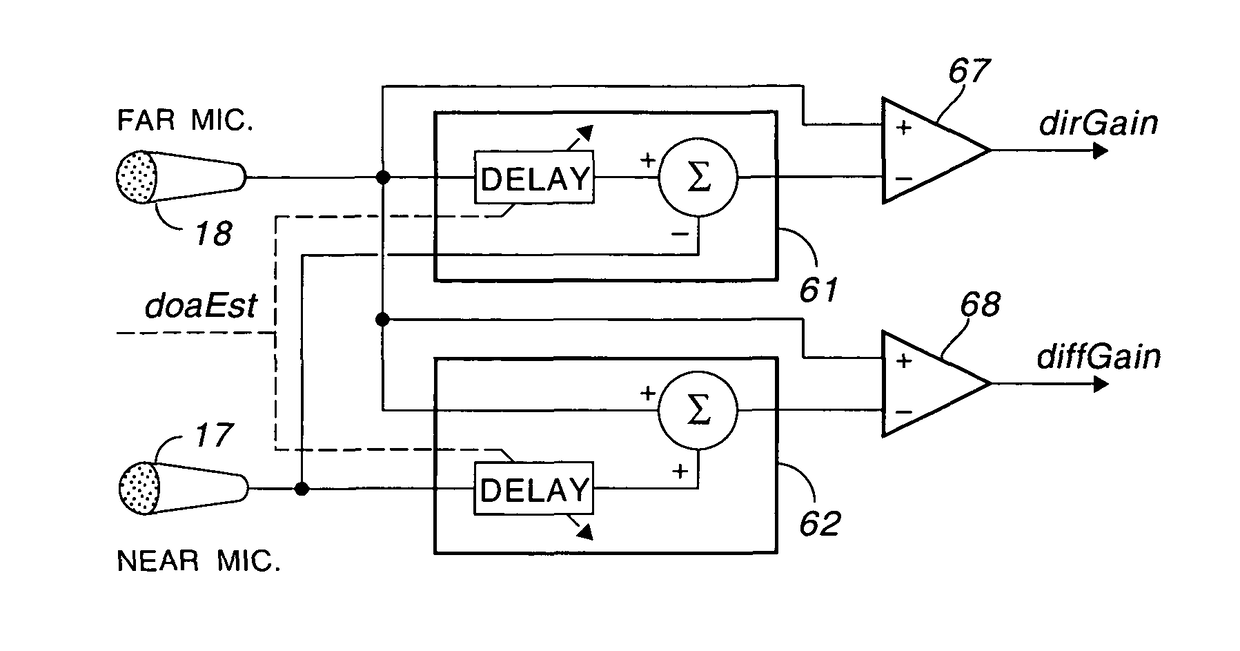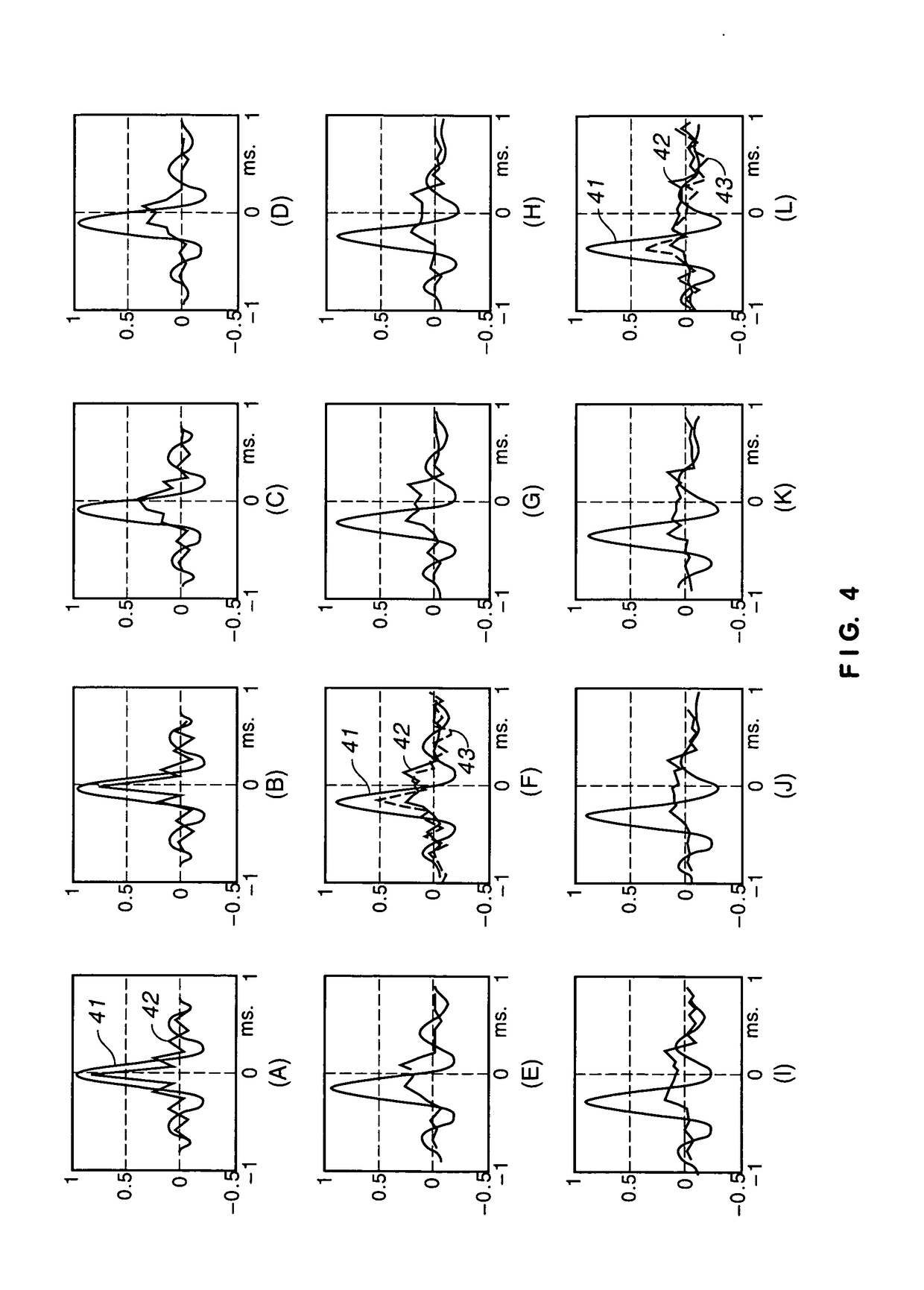Controlling speech enhancement algorithms using near-field spatial statistics
a near-field spatial and statistical technology, applied in the field of audio signal processing, can solve the problems of inability to distinguish desired speech from interfering signals, cellular telephones are not always positioned in this manner, and the positioning of the microphone is far from ideal, so as to improve the near-field detection effect and enhance the indication of near-field speech
- Summary
- Abstract
- Description
- Claims
- Application Information
AI Technical Summary
Benefits of technology
Problems solved by technology
Method used
Image
Examples
Embodiment Construction
[0036]For the sake of simplicity, the invention is described in the context of a cellular telephone but has broader utility; e.g. communication devices that do not utilize a dial tone, such as radio frequency transceivers or intercoms. This invention finds use in many applications where the internal electronics are essentially the same but the external appearance of the device is different. FIG. 3 illustrates a conference phone or speaker phone such as found in business offices. Telephone 30 includes microphones 31, 32, 33, and speaker 35 in a sculptured case. Which microphone is the near-field microphone depends upon which of microphones 31, 32, or 33 is closest to the person speaking. Even so, the invention can be used to improve speech enhancement or noise reduction under these circumstances.
Maximum Normalized Cross-Correlation (MNC)
[0037]When an acoustic source is close to a microphone, the direct to reverberant signal ratio at the microphone is usually high. The direct to rever...
PUM
 Login to View More
Login to View More Abstract
Description
Claims
Application Information
 Login to View More
Login to View More - R&D
- Intellectual Property
- Life Sciences
- Materials
- Tech Scout
- Unparalleled Data Quality
- Higher Quality Content
- 60% Fewer Hallucinations
Browse by: Latest US Patents, China's latest patents, Technical Efficacy Thesaurus, Application Domain, Technology Topic, Popular Technical Reports.
© 2025 PatSnap. All rights reserved.Legal|Privacy policy|Modern Slavery Act Transparency Statement|Sitemap|About US| Contact US: help@patsnap.com



